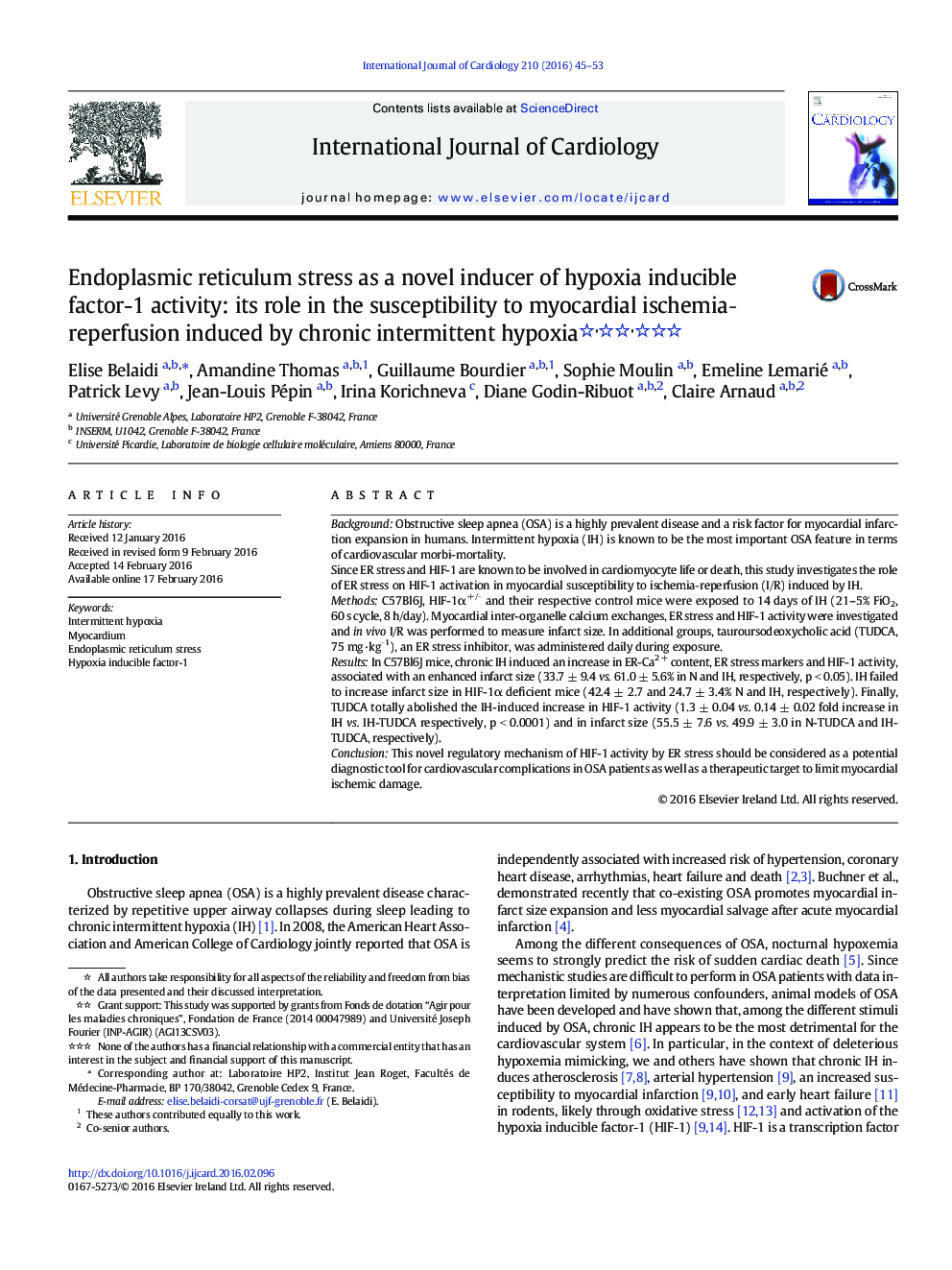| کد مقاله | کد نشریه | سال انتشار | مقاله انگلیسی | نسخه تمام متن |
|---|---|---|---|---|
| 5964281 | 1576140 | 2016 | 9 صفحه PDF | دانلود رایگان |

BackgroundObstructive sleep apnea (OSA) is a highly prevalent disease and a risk factor for myocardial infarction expansion in humans. Intermittent hypoxia (IH) is known to be the most important OSA feature in terms of cardiovascular morbi-mortality.Since ER stress and HIF-1 are known to be involved in cardiomyocyte life or death, this study investigates the role of ER stress on HIF-1 activation in myocardial susceptibility to ischemiaâreperfusion (I/R) induced by IH.MethodsC57Bl6J, HIF-1α+/â and their respective control mice were exposed to 14 days of IH (21-5% FiO2, 60 s cycle, 8 h/day). Myocardial inter-organelle calcium exchanges, ER stress and HIF-1 activity were investigated and in vivo I/R was performed to measure infarct size. In additional groups, tauroursodeoxycholic acid (TUDCA, 75 mg·kgâ 1), an ER stress inhibitor, was administered daily during exposure.ResultsIn C57Bl6J mice, chronic IH induced an increase in ER-Ca2 + content, ER stress markers and HIF-1 activity, associated with an enhanced infarct size (33.7 ± 9.4 vs. 61.0 ± 5.6% in N and IH, respectively, p < 0.05). IH failed to increase infarct size in HIF-1α deficient mice (42.4 ± 2.7 and 24.7 ± 3.4% N and IH, respectively). Finally, TUDCA totally abolished the IH-induced increase in HIF-1 activity (1.3 ± 0.04 vs. 0.14 ± 0.02 fold increase in IH vs. IH-TUDCA respectively, p < 0.0001) and in infarct size (55.5 ± 7.6 vs. 49.9 ± 3.0 in N-TUDCA and IH-TUDCA, respectively).ConclusionThis novel regulatory mechanism of HIF-1 activity by ER stress should be considered as a potential diagnostic tool for cardiovascular complications in OSA patients as well as a therapeutic target to limit myocardial ischemic damage.
Journal: International Journal of Cardiology - Volume 210, 1 May 2016, Pages 45-53